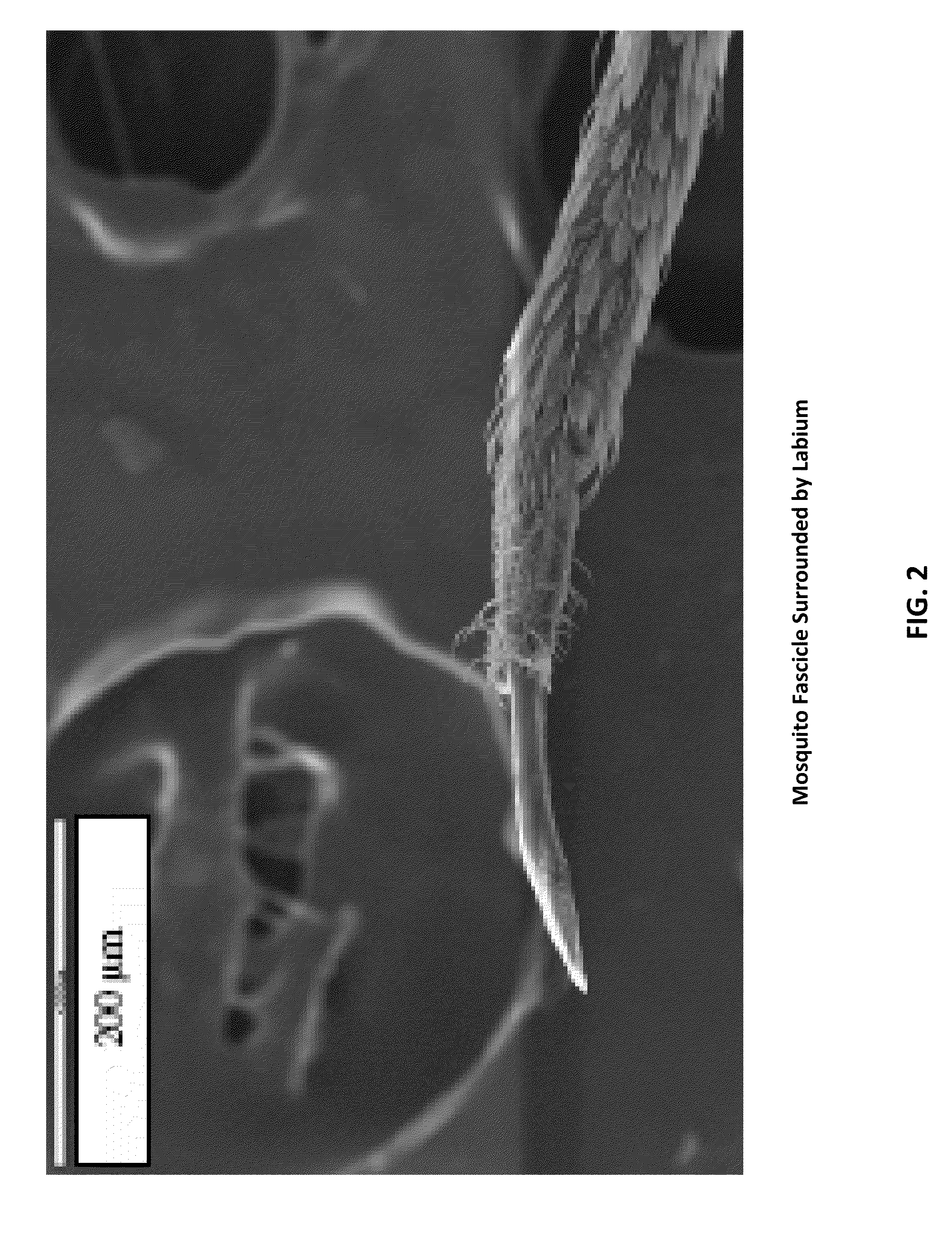Fiber array for optical imaging and therapeutics
- Summary
- Abstract
- Description
- Claims
- Application Information
AI Technical Summary
Benefits of technology
Problems solved by technology
Method used
Image
Examples
Embodiment Construction
[0149]Reference will now be made in detail to various exemplary embodiments of the invention. The following detailed description is presented for the purpose of describing certain embodiments in detail and is, thus, not to be considered as limiting the invention to the embodiments described. Rather, the true scope of the invention is defined by the claims.
[0150]Embodiments of the invention provide a non-metal needle comprising structure for transmitting light, which is capable of piercing human tissue, and has a maximum diameter in the range of about 100-300 micron. Also included are needles comprising a base having an outer diameter in the range of about 100-300 micron and a tip having an outer diameter in the range of about 5-50 micron. Further provided are needles comprising a base having an outer diameter in the range of about 100-200 micron and a tip having an outer diameter in the range of about 5-40 micron. Other embodiments provide needles comprising a base having an outer d...
PUM
 Login to View More
Login to View More Abstract
Description
Claims
Application Information
 Login to View More
Login to View More - R&D
- Intellectual Property
- Life Sciences
- Materials
- Tech Scout
- Unparalleled Data Quality
- Higher Quality Content
- 60% Fewer Hallucinations
Browse by: Latest US Patents, China's latest patents, Technical Efficacy Thesaurus, Application Domain, Technology Topic, Popular Technical Reports.
© 2025 PatSnap. All rights reserved.Legal|Privacy policy|Modern Slavery Act Transparency Statement|Sitemap|About US| Contact US: help@patsnap.com



